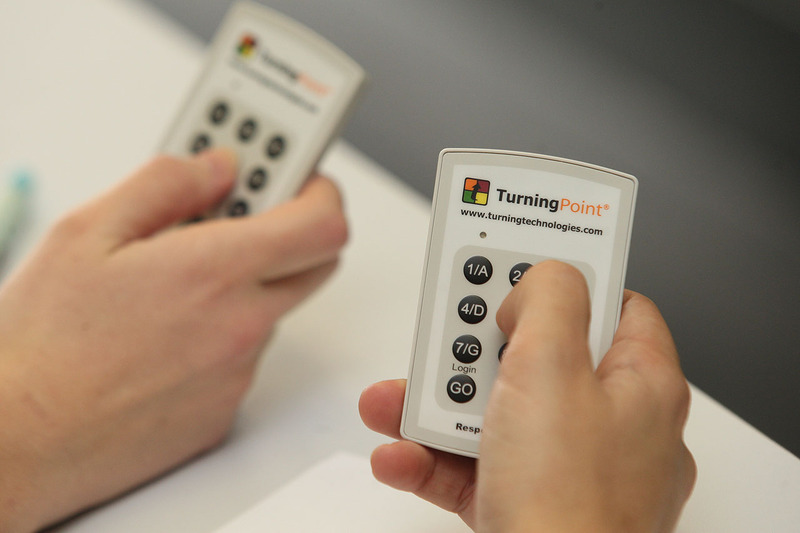New Learning MOOC’s Updates
Analyzing Student Response Systems - Clickers
Student Response Systems
Clicker student response systems are often used in classrooms to increase student engagement, check student understanding and quickly poll students’ feelings and preferences. They are often promoted as a way to turn teacher fronted lectures into interactive active-learning experiences by introducing a quiz game element (Martyn 2007). The response systems involve small devices or a web connected app with an “A”, “B”, “C” or “1”, “2”, “3” response option that students use to answer questions posed by the instructor.
Didactic/Mimetic
The quiz game environment that clickers provide would fit best with didactic pedagogy. As lecturers present their topics, they can offer simple multiple choice or true/false questions to check the students comprehension or short-term memory. Open questions or nuanced answers are not possible.
Authentic/Synthetic
Martyn (2007) gives some evidence on how clickers make lecture style classes active. One reason is students are engaged throughout the class answering questions on class materials. In other words, they have something to do while the lecturer talks for most of the period. Another reason is students can answer in anonymity, so those who are too afraid to answer questions in public view, can do it freely with the clickers. I am dubious of Martyn’s evidence of active learning, except for one. She describes how lecturers can offer students discussion time before answering questions, so a clicker activity could be a nudge to get students to discuss class topics with each other.
Another way clickers could be used as authentic pedagogy is its ability to survey students’ attitudes and preferences. Teachers can offer a choose-your-own-adventure option and let students vote on topics and activities anonymously.
Transformative/Reflexive
Student response systems would not find a home in transformative/reflexive pedagogy. Its main purpose is to allow students to quickly and easily answer multiple choice or true-false questions to see if they are following the lecture. It does not allow for students to communicate with each other (within the system) or nuanced answers (answers are ‘a’, ‘b’ or ‘c’). Lastly, the agency balance is heavily in favor of the teachers, since they are the ones who make the questions, provide the answers and command the students to answer.
Reference
Martyn, Margie. (2007) Clickers in the Classroom: An Active Learning Approach. Educause Quarterly No.2


